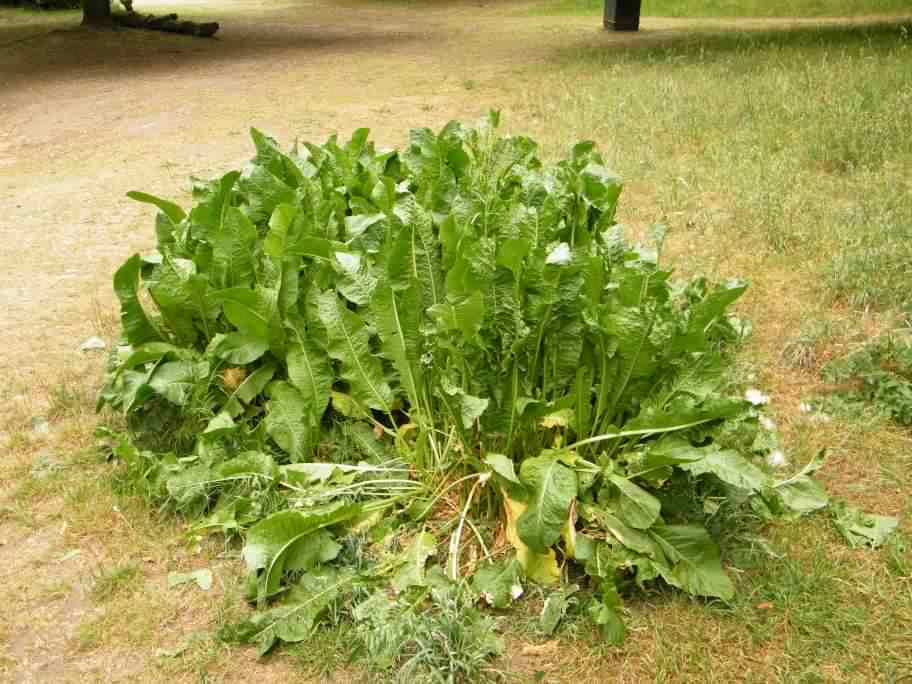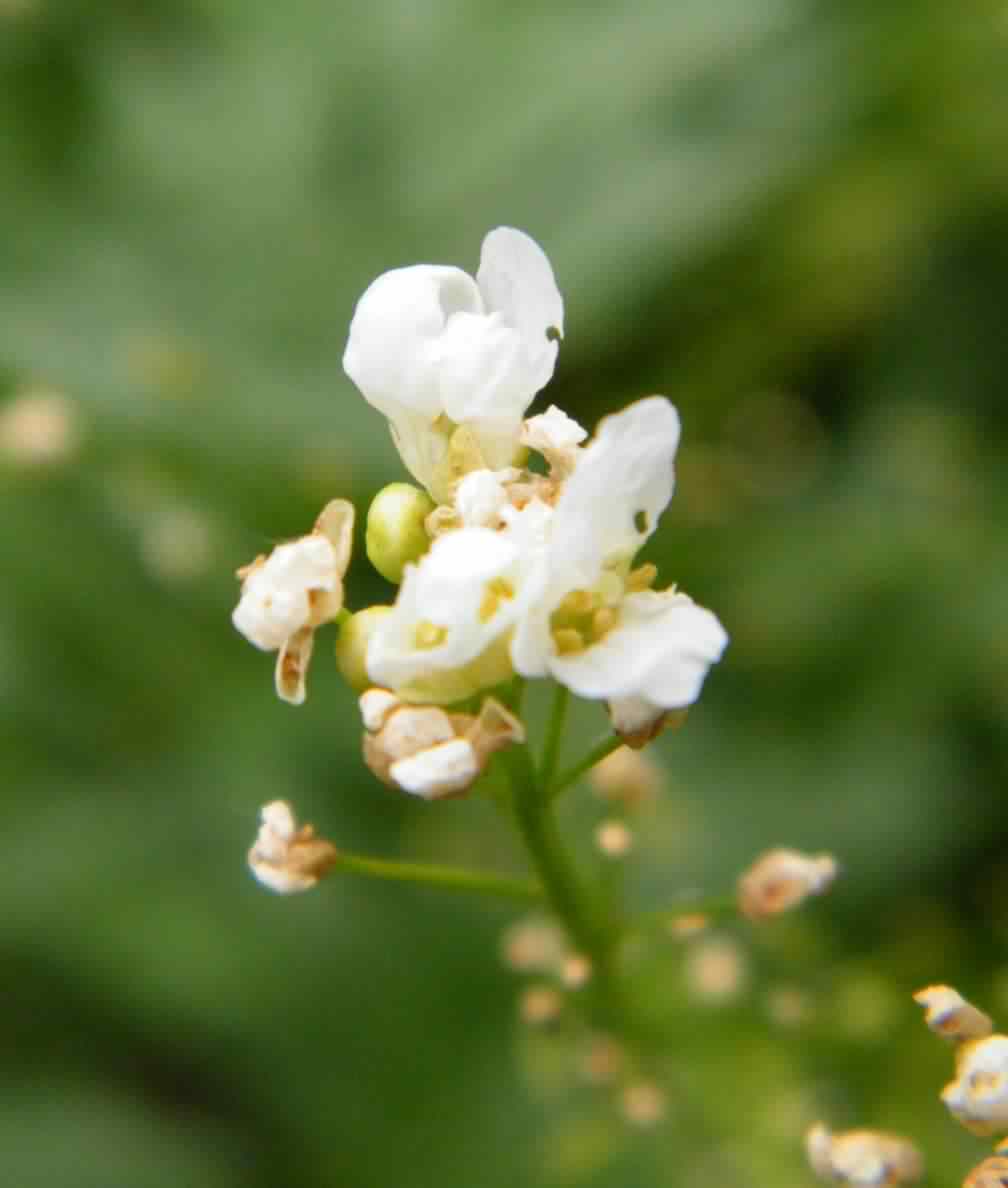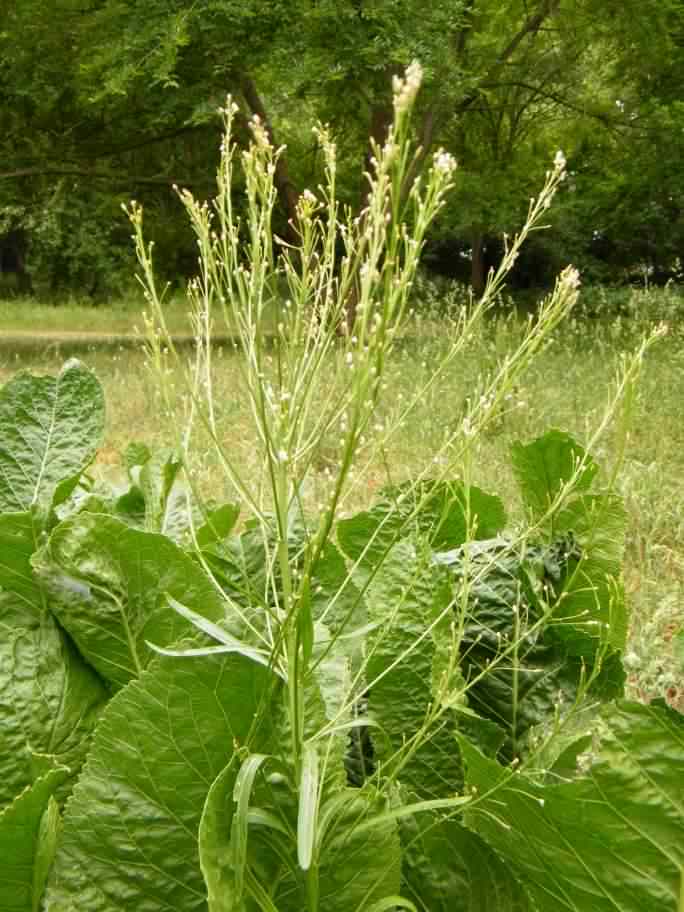


Photos ©2004–
Click any photo for a larger imageHorseradish - Armoracia rusticana
Family - Brassicaceae
Also known as - Cochlearia armoracia
A hardy robust perennial plant of the Brassicaceae family, which includes other plants like Mustard, Broccoli and Cabbage. Grows to 1.5m (5ft) tall on erect stems from a large white fibrous tapered root. Toothed leaves can be up to 1m (30in) long, elliptical with wavy margins. White flowers 5–7mm (0.2–0.275in)long in panicles on long stalks on the upper stem appear May to July, fruiting to a pea pod shaped capsule 4–6mm (0.15–0.23in) long. Horseradish will grow well in most places spreading to fill whatever space is available, so use restraint when planting. It is grown by dividing and replanting the root or by natural growth, it likes deep, moist soil but will grow almost anywhere. The plant is probably native to southeastern Europe and western Asia, it is now popular around the world as a well known condiment.
BCP do not advise or recommend that Horseradish – Armoracia rusticana is eaten or used as an herbal remedy. Horseradish is an irritant and may provoke allergic reactions. If large amounts are ingested, gastrointestinal, vomiting, diarrhoea, and irritation of mucous membranes and the urinary tract can result. Horseradish, however it is frequently used as a condiment, especially for beef, sausages, and fish dishes. Horseradish root when dug has little or no aroma, but when prepared by cutting or grating, enzymes from the plant cells break down Sinigrin (a glucosinolate) to produce Mustard oil (Allyl isothiocyanate), which irritates the sinuses and eyes, rather like the reaction when preparing Onions. Mixed with vinegar and /or mayonnaise to a creamy paste the condiment can be kept refrigerated for several months, eventually beginning to darken when it should be disposed of. The leaves are also edible.
 |
 |
 |
Photos ©2004– Click any photo for a larger image |
Site design ©1999– Brickfields Country Park - Privacy -